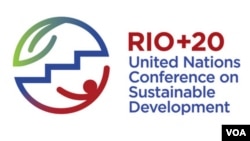The world’s eight largest development banks say they’ll invest 175 billion dollars to finance sustainable urban transportation systems. The announcement came at the U.N. Conference on Sustainable Development, also known as Rio plus 20.
The banks will invest the funds over the next 10 years, saying better transportation will spur development and protect the environment and public health.
“I think this is a real breakthrough for sustainable transport and sustainable development. It heralds a move away from massive road building, which we’ve seen in past decades from the development banks, and a move towards more investment in urban public transportation, safer roads for walking and bicycling and more efficient freight systems that can help build a green economy,” said Michael Replogle, founder of the Institute for Transportation and Development Policy, who was in Rio de Janeiro for the announcement. He said such transportation systems are vital as populations shift toward urban areas.
“We have half the world’s population now living in cities and another billion people will move to the world’s cities over the next 20 years. So the pattern that’s determined by transportation of how those cities are built will really make a huge difference in how sustainable our world is 20 years from now,” he said.
Much of the urban population growth is occurring in Africa and Asia.
Replogle said the lack of sustainable transport systems today comes at a cost.
“We see 1.3 million people a year die from traffic fatalities – approximately an equal number die from air pollution. Half of air pollution deaths are caused by transportation related pollution,” he said.
While the development banks are focusing on urban transportation systems, existing road networks, said Replogle, must be maintained.
“Keeping roads in a state of good repair is indeed a part of sustainable transportation – taking streets that don’t accommodate all users - like people who walk or cycle or take public transport - to accommodate those users safely. Those are important priorities for road investment,” he said.
He said this is also important for a country like the United States, where most of the road investment in recent decades has occurred in suburban areas. He said those roads need to be retrofitted and modernized for the 21st century. Fifty years ago, he said, the U.S. invested about 5 percent of its gross domestic product in transportation. That figure has fallen to just over one percent.
Replogle described the core features of new urban sustainable transportation systems as being safe, clean and affordable with access for all. The systems not only would be designed for better transportation of people, but freight as well.
“So that shippers and haulers can get their goods to market in the most affordable and least environmentally damaging way,” he said.
This would include using trucks for short distances and barge and rail for longer distances.
The banks will invest the funds over the next 10 years, saying better transportation will spur development and protect the environment and public health.
“I think this is a real breakthrough for sustainable transport and sustainable development. It heralds a move away from massive road building, which we’ve seen in past decades from the development banks, and a move towards more investment in urban public transportation, safer roads for walking and bicycling and more efficient freight systems that can help build a green economy,” said Michael Replogle, founder of the Institute for Transportation and Development Policy, who was in Rio de Janeiro for the announcement. He said such transportation systems are vital as populations shift toward urban areas.
“We have half the world’s population now living in cities and another billion people will move to the world’s cities over the next 20 years. So the pattern that’s determined by transportation of how those cities are built will really make a huge difference in how sustainable our world is 20 years from now,” he said.
Much of the urban population growth is occurring in Africa and Asia.
Replogle said the lack of sustainable transport systems today comes at a cost.
“We see 1.3 million people a year die from traffic fatalities – approximately an equal number die from air pollution. Half of air pollution deaths are caused by transportation related pollution,” he said.
While the development banks are focusing on urban transportation systems, existing road networks, said Replogle, must be maintained.
“Keeping roads in a state of good repair is indeed a part of sustainable transportation – taking streets that don’t accommodate all users - like people who walk or cycle or take public transport - to accommodate those users safely. Those are important priorities for road investment,” he said.
He said this is also important for a country like the United States, where most of the road investment in recent decades has occurred in suburban areas. He said those roads need to be retrofitted and modernized for the 21st century. Fifty years ago, he said, the U.S. invested about 5 percent of its gross domestic product in transportation. That figure has fallen to just over one percent.
Replogle described the core features of new urban sustainable transportation systems as being safe, clean and affordable with access for all. The systems not only would be designed for better transportation of people, but freight as well.
“So that shippers and haulers can get their goods to market in the most affordable and least environmentally damaging way,” he said.
This would include using trucks for short distances and barge and rail for longer distances.








